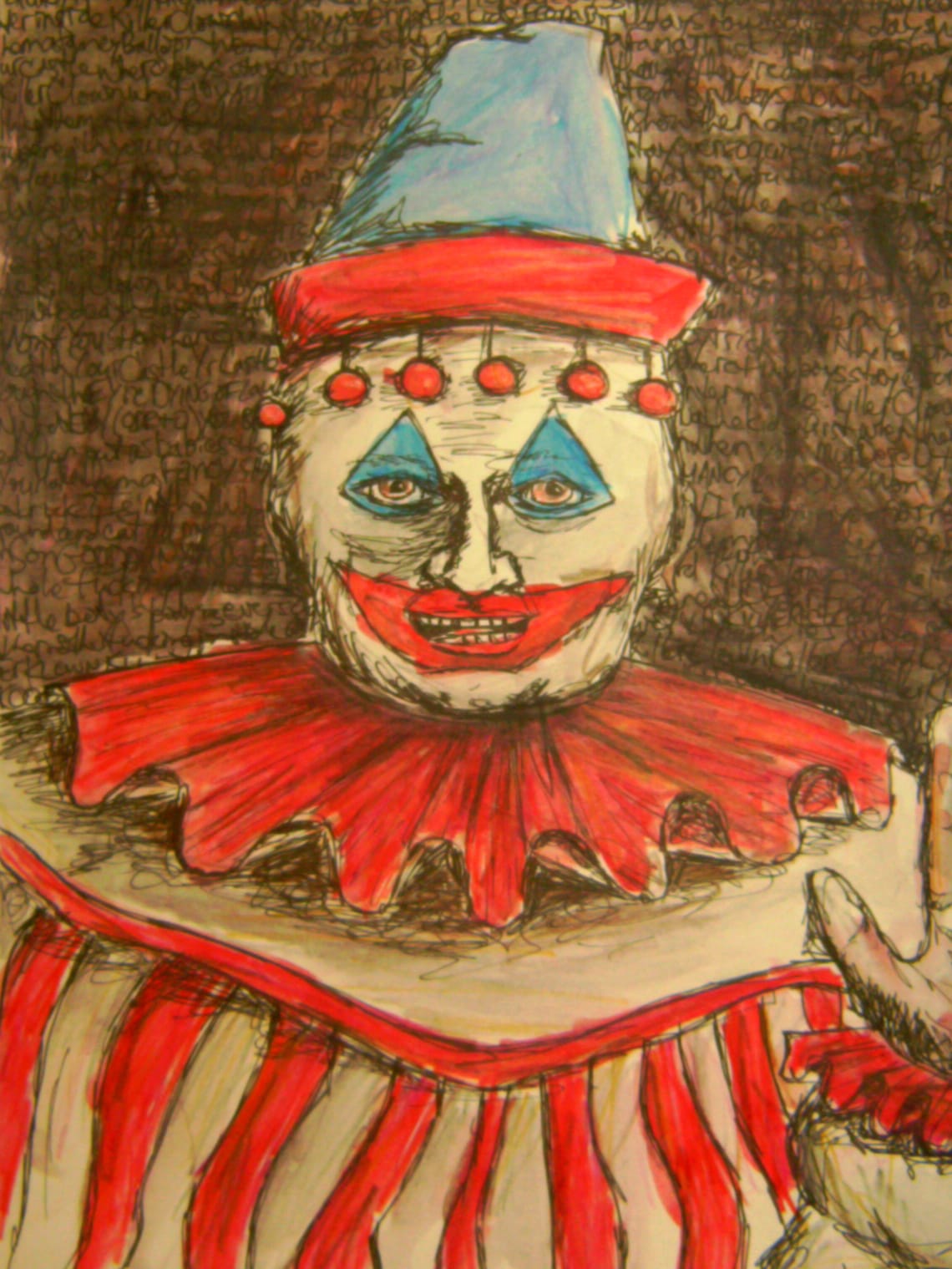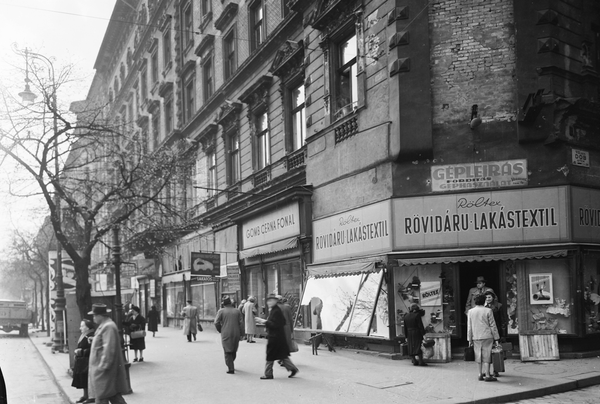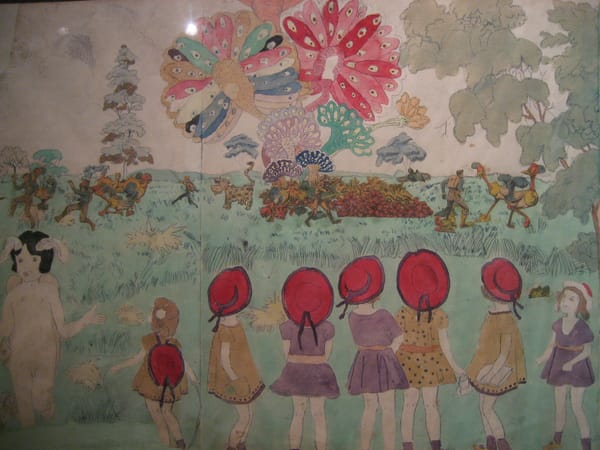Pogo the Clown – The Smile That Killed
Pogo the Clown is the smiling mask of horror worn by John Wayne Gacy, the American killer who hid death behind paint and laughter.

Pogo the Clown turned a smile into a symbol of death.
Imagine a children’s party in the suburbs of Chicago in the 1970s. The yard is filled with balloons, the laughter of children and the sweet air of sugar and cake. The doorbell rings, and in steps a clown, dressed in bright colors, a red hat, his face painted white, red circles on his cheeks. He waves his large hand and introduces himself, “Pogo the Clown.”
The children run around him. He makes balloon swords and dogs, tells jokes, dances clumsily like a cartoon character. The parents smile with relief, the party is a success. Pogo brings joy, innocence, a sense of safety.
But behind the smile there was something else. Beneath the thick makeup was not only a performer, but a man living between two worlds. By day he spread laughter, but by night his mind was home to a shadow that devoured everything.
No one could yet know that Pogo the Clown would become a name no longer tied to childhood joy, but to nightmares.
The Clown’s Double Life
John Wayne Gacy was a respectable man in the suburbs of Chicago. He ran his own contracting business, took part in local politics, and was known in the neighborhood as friendly and helpful. He had connections with politicians, hosted parties, and was often seen at community events smiling among others.
But that was only one side of his life.
The other side lived inside his house, more precisely beneath it. Between 1972 and 1978 Gacy lured young boys and men to his home with promises of work, money or simple friendship. Many never returned. They were strangled, murdered and buried in the crawl space under his house. Some were thrown into a nearby river like discarded objects. Gacy murdered at least 33 young boys and men.
During all this time, Gacy occasionally dressed as a clown, Pogo the Clown. He performed at children’s parties, hospitals and charity events. His wide painted smile hid what he did at night, and no one suspected that beneath his home lay dozens of lost lives.
Art from Prison, The Clown Never Dies
When John Wayne Gacy was caught in December 1978 and the bodies were found beneath his house, the world finally saw his two faces, the respectable man and the monster. He was sentenced to death, and the following years he spent in prison waiting for execution.
There he began to paint.
On his canvases appeared a familiar figure, Pogo the Clown. The same wide smile, the same bright shapes. But now it was no longer just a performer at a children’s party, it was the shadow of his crimes made permanent.
Gacy sold his paintings from prison, and they were bought for thousands of dollars. Some collectors wanted to own a piece of horror, some bought the paintings only to burn them in ritual, fearing they contained something that should not be kept.
For many, the works were not art but a continued crime, a way for Gacy to remain in people’s minds, to control them even from within his cell.
Art as a Tool of Control
John Wayne Gacy was not an artist in the real sense of the word. He had no training, no personal style, only figures that he repeated again and again. But that was where the power lay.
He painted himself as Pogo the Clown, a figure that at the time of his arrest had already gained a dark reputation. He painted Santas, fairy tale creatures, dwarfs, childish images that looked distorted, as if trapped in the wrong body.
But the painting itself was not what mattered most. What mattered was what he did through it.
It has been speculated that Gacy required every buyer to write to him personally. He wanted to know who looked at his art, who touched his mind through the canvas. He could no longer kill, but he could still control. He could still cause fear, draw people closer, create a connection from inside his cell.
His art was not liberation, it was a chain. A psychological game through which he proved to himself that he still had power.
The Clown’s Gaze
Gacy’s paintings are simple, almost childlike, and that is what makes them disturbing. In many of them Pogo the Clown looks straight at the viewer and smiles awkwardly. It looks frozen, artificial, and because of that it feels as if it is waiting for something.
Among collectors, stories circulate. Many say the paintings cause nightmares and unease, that they carry the shadow of their creator. Some claim that the presence of the painting in a room feels like a cold stare on the back of the neck.
It has been told that one buyer’s child began to talk to “Pogo,” even though the painting was in storage and hidden away. Another said that the expression in the clown’s eyes changed overnight.
There is no certainty about the truth. Perhaps it is only a trick of imagination, or perhaps Gacy truly managed to trap something dark on the canvas, some silent force.
Why Did He Paint
When psychologists and researchers have tried to understand Gacy’s art, they have offered several theories.
Identity preservation. Gacy wanted to remain Pogo, not just a prisoner waiting for execution, but the character he had created and through which he could live forever.
Power and control. The paintings may have been his way to rule over others. Art that horrified and fascinated at the same time gave him again the feeling of power. He could no longer tie anyone physically, but he could tie them to his mind.
Manipulation. Some believe that Gacy used his art to lure attention and even admiration. Every buyer, every letter brought him confirmation that he still mattered, that he was not forgotten.
The paintings were not redemption for him, not repentance. They were an extension of his crimes, a silent way to say that he still existed.
Warning
John Wayne Gacy’s art is not only painted canvas. Every smiling clown is a shadow of his deeds, every innocent color stained with the darkness of his crimes.
They can be looked at, collected, even burned, but they can never be cleansed of what they represent. They are a continued crime, an icy reminder that Pogo the Clown did not die on the night of Gacy’s execution.
He did not paint to be free. He painted to remain. He painted so that his gaze would never disappear.
And so the warning still stands, if you see Pogo smiling from a painting, do not smile back.
Article by Mimo Warto
© ART Walkway 2025. All Rights Reserved.







